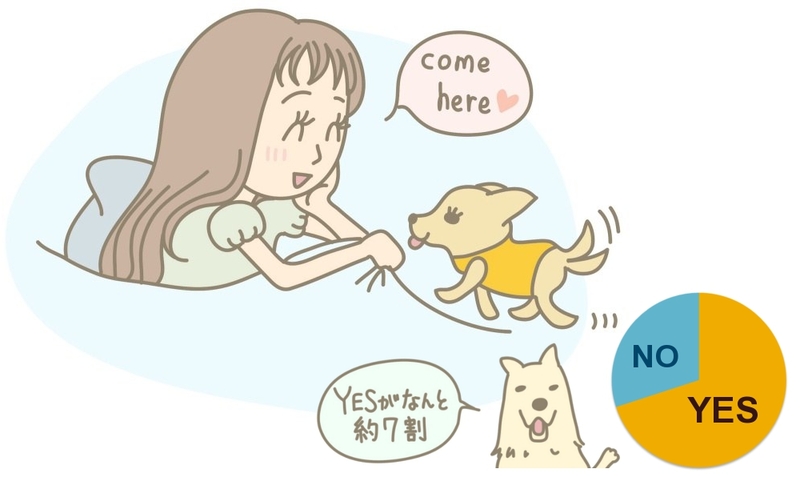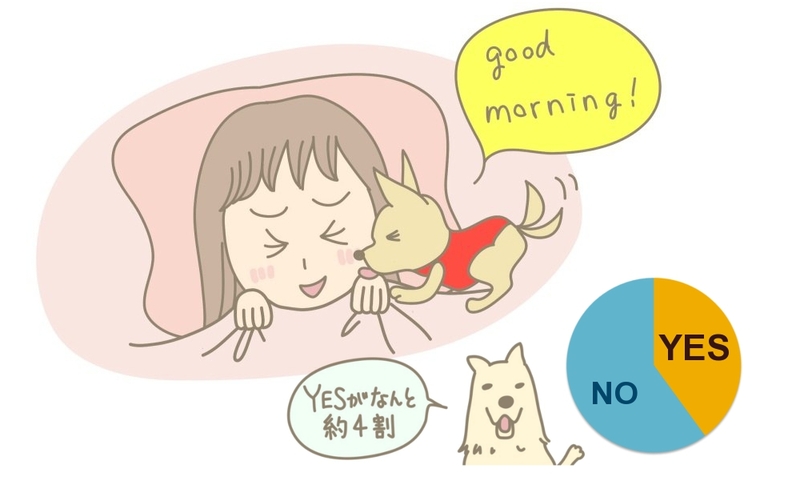
Can you imagine what specific activities pet owners actually do together with their pets?
You might picture things like walking together, playing indoors, or feeding and training them. However, a survey conducted by the Think Pet Project this January among dog owners revealed that pets and their owners share far more daily activities than imagined.
When asked about indoor activities they do together, the most striking finding was that about 70% of respondents answered "yes" to the question, "Do you sleep with your dog at night?"
While this action itself isn't new, the high figure of about 70% seems to symbolize the deepening relationship with pets.

Approximately 40% also responded that they "let their beloved dog wake them up in the morning," suggesting pets are becoming an increasingly significant presence within the fundamental daily routines of humans.

Additionally, about 30% reported "making homemade meals for their dog," and about 70% said they "give their dog massages." These results show that actions previously considered unrelated to pets are now becoming linked to them. Furthermore, about 70% of owners, both men and women, responded affirmatively to the question "I want to go out with my dog as much as possible," revealing owners' desire to spend various aspects of daily life with their pets.
In recent years, places specifically designed for visiting with pets, such as dog parks and dog cafes, have steadily increased. Initiatives are also emerging, like car dealerships allowing pets inside and housing exhibitions where owners can bring their pets.
However, the reality is that places where pets are welcome remain limited, and many owners continue to seek locations where they can spend time with their pets.
A survey on spending habits related to pets also revealed interesting results.
Excluding essential items (pet food, litter, medical expenses, etc.), the average annual expenditure by pet owners was ¥80,838. When asked about their perception of last year's total pet-related spending, negative responses were rare: "I spent money, but I could have spent more" (28.0%), and 42.7% felt "I spent less, but it was money well spent."

Although specific amounts weren't mentioned, a similar survey found 66.3% of owners "want to spend as much as possible," indicating demand for more products and services. The fact that the desire to spend exists, yet the products and services to spend on are not yet available, suggests the vast potential within the pet services sector.
While the total number of pets is currently stable, data from the Ministry of Health, Labour and Welfare shows an increase of approximately 120,000 pets over the past five years (2007-2012) in the Tokyo metropolitan area alone. Combined with the rise in single-person households and the aging population, demand for pets as companions remains strong. However, as mentioned earlier, both the "places" where pets can go and the "products" and "services" related to pet living fail to fully meet pet owners' needs. This suggests there is significant room for development and improvement.
Currently, the perspective of "for both people and pets" is becoming increasingly important when considering coexistence with pets. This shift is influenced by the introduction of "animal behavior studies" from Europe to Japan. This field emphasizes a stance of greater respect and understanding for pets to achieve coexistence, moving away from the traditional approach of "training pets that have entered human lives to conform to human lifestyles."
Just as human actions have intentions and reasons, pet behaviors equally possess their own intentions and reasons. Our team believes that if companies can build infrastructure that fulfills owners' desire to "spend more time with their pets," while understanding the background of these behaviors, it will represent a step forward toward realizing our ideal society of coexistence with pets.






